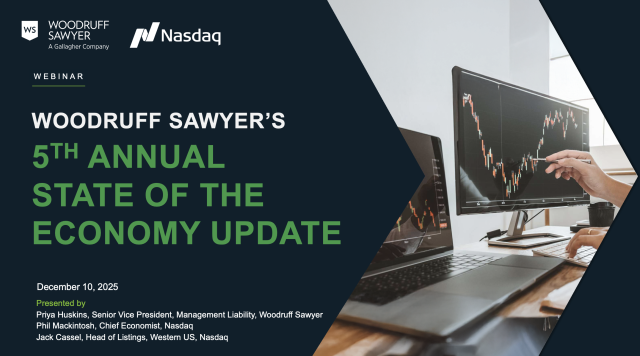Blog
Trading Places? Checking in on the New Texas Stock Exchange
Everyone knows the names of the two major national stock exchanges: the New York Stock Exchange and the Nasdaq stock market. In fact, there are currently a total of 16 national stock exchanges in the United States, each with a slightly different set of rules, regulations, and reasons for being. Later this year, however, the menu will expand when the Texas Stock Exchange (TXSE) plans to open for business. It is well-capitalized and backed by sophisticated market actors. It also coincides with a broader push by Texas to become a corporate law powerhouse. This week, my colleagues Yelena Dunaevsky and Walker Newell cover some of the key preliminary features of the TXSE that should matter to directors and officers of corporations considering listing in Texas. —Priya Huskins[1]
Texas is an economic powerhouse. At more than $2.7 trillion in 2024, Texas has the second-highest gross GDP (after California) in the country and the eighth highest in the world (sorry Canada, Italy, and Brazil). The Lone Star State is headquarters to more than 50 Fortune 500 companies, which puts it neck-and-neck with California and New York for the most in the country.

This is not new. The Texas economy has been a powerhouse for many decades.
Historically, however, many of the large and sophisticated corporations headquartered in Texas were incorporated in Delaware. Texas is trying to change this. To compete with Delaware, in the past year, Texas has created new business courts and made D&O-friendly amendments to state corporate law (which we have written about here, here, and here).
Like most public companies based in other states, public companies based in Texas are usually listed on either the New York Stock Exchange (NYSE) or Nasdaq (or both). As everyone knows, both of these exchanges are headquartered in New York. Texas is trying to change this, too.
In April 2025, the Texas Stock Exchange (TXSE) filed paperwork to register as a national securities exchange. The SEC is currently reviewing the registration filing.
The TXSE has an imposing group of investors, including BlackRock, Citadel, and Charles Schwab. It has secured over $100 million in funding.
The first TXSE dual listings are expected to begin in 2026, with an initial crop of initial public offerings (IPOs) to follow. This is a big development in the world of stock exchanges.
But why? What is the TXSE’s raison d'être? And will companies listed on the TXSE be subject to significantly different standards than those listed on Nasdaq or NYSE?
To answer these questions, let’s take a look at what the TXSE has been saying about itself, some of the new exchange’s proposed listing standards, how those listing standards compare to NYSE and Nasdaq rules, and what it all means for Texas-curious directors and officers.
“The Bull Market is Coming Home”
The TXSE’s mission statement is: “The bull market is coming home." That’s some good old-fashioned marketing right there.
Underneath the slogans, the thesis propounded by the TXSE is that:
- Texas is a company-friendly economic powerhouse (see above). The TXSE says: “With Texas' booming economy, pro-business policies, and growing population, the right time to establish a national securities exchange in Texas is now.”
- There is no good reason why we should have two dominant stock exchanges. The TXSE says that it “aims to revitalize competition for issuers.” Presumably, this competition will relate in part to the actual cost to companies of listing and remaining listed. It costs about $300,000 for large issuers to list common stock on Nasdaq or NYSE. From what we can tell, TXSE has not yet published its listing fees.
- The fast-growing “Southeast Quadrant” (we are not quite as sold on this branding) deserves a regional hub that includes a premier stock exchange. According to the TXSE, the Southeast Quadrant includes Texas, Florida, North Carolina, Georgia, and a number of other southeastern states (but not Kentucky or Missouri, sorry!). The TXSE highlights an impressive basket of stats about the Southeast Quadrant, including that it is home to almost one quarter of all publicly traded companies and “contributes more to GDP than any other quadrant” (again, when did we decide to divide the country into quadrants?).
- The total number of public companies has been falling for many years, which is not great. The TXSE says that it can help to reverse this trend by providing “greater alignment for issuers and investors.” Given that the TXSE’s listing rules are quite similar to existing NYSE and Nasdaq standards (see below), however, it is not self-evident that the existence of another exchange will catalyze a rebound in the overall number of public companies. We’ll see.
- In 2025, there is a very high correlation between attracting large amounts of public attention and attracting large amounts of investment dollars. The TXSE will be headquartered in a shiny building in Dallas, which will (among other things) “[e]stablish an iconic bell-ringing venue and broadcast center.” Presumably, Jim Cramer and CNBC will cover the bell-ringing ceremonies, we will all increasingly associate stock trading and financial markets with Texas, and this will be good for the state and companies with significant operations there.
TXSE has come up in multiple recent conversations with special purpose acquisition company (SPAC) teams, and the new exchange is a key topic of discussion in the currently bullish SPAC market. Companies seeking to innovate, and especially newly formed companies without roots at any of the existing exchanges, may be attracted by the new frontier TXSE offers. Furthermore, TXSE may offer a new option for some SPAC sponsors who feel they have had to jump through hoops over the years to satisfy various Nasdaq and NYSE requirements.
Listing Standards: Earnings and Market Cap
In corporate law, Texas has been competing with Delaware by suggesting its courts will impose less-rigid standards of liability for directors and officers of companies incorporated in the state. Will the TXSE similarly compete with NYSE and Nasdaq by creating more relaxed listing standards? It doesn’t look like it.
For a deep dive into the similarities and differences between the TXSE listing standards and legacy exchanges, this article from the Hunton law firm is helpful. At a high level, companies can qualify for listing by meeting either earnings or market capitalization thresholds.
The TXSE’s earnings test closely resembles NYSE and Nasdaq standards, requiring between $10–$12 million of aggregate pre-tax earnings in the past three years for domestic companies. Foreign issuers need to show $100 million in aggregate pre-tax earnings in the past three years.
Companies without significant earnings but with high investor demand can qualify for listing if they have a market cap of greater than or equal to $200 million ($500 million for foreign issuers). This aligns closely with NYSE. Nasdaq is more generous for small-cap companies and has a tiered approach.
This is not a race to the bottom. The TXSE clearly wants to be a premium listing venue for blue-chip companies.
At the same time, TXSE seems to be looking to innovate. There has been discussion of using advanced technology and a lean operational model to offer lower listing and trading fees compared to legacy exchanges.
Since TXSE is starting from a blank slate, it may look to attract a broader range of issuers, including SPACs, real estate investment trusts (REITs), and international firms seeking a US listing.
While TXSE is still finalizing its rules and procedures, this article from the law firm Greenberg Traurig lays out the steps companies may want to consider to seek a listing on the exchange.
Listing Standards: Corporate Governance
Along with SEC rules and state law, exchange rules are an important source of corporate governance requirements for public companies. As discussed, the Texas state legislature has been trying to show that Texas is more friendly than Delaware when it comes to D&O liability (although, on paper, the legal standards are still quite similar).
The TXSE corporate governance rules are also very similar to NYSE and Nasdaq rules, particularly on big structural questions about board composition and independence.
Like NYSE and Nasdaq, TXSE will require listed companies to have a majority of independent directors on the board, with a compliance grace period for newly listed companies. TXSE empowers boards to determine whether directors are independent, while providing a list of relationships—very similar to NYSE’s and Nasdaq’s—that would preclude a board finding of independence. The TXSE provisions for board committees are also quite similar to analogous rules from the legacy exchanges.
So, it doesn’t look like TXSE plans to change the face of public company board governance. This approach is harmonized with the relatively strict listing standards and confirms that TXSE is targeting strong and sophisticated listing candidates.
Conclusion
Even before opening its doors, TXSE has already succeeded in shining a light on Texas as a stock market player. It has created a buzz within several circles, including the SPAC and real estate investment trust (REIT) markets. Recognizing the presence of a bona fide competitor, NYSE moved its Chicago exchange to Dallas earlier this year, rebranding as NYSE Texas. Nasdaq also opened a branch office in Texas.
Historically, D&O insurance underwriters have been mostly agnostic as to where a company is headquartered, domiciled, or traded, whether on the NYSE or Nasdaq. Given the robust listing standards discussed above, there is no reason to think that a company’s decision to list on TXSE will have any measurable impact on the D&O insurance calculus in any direction.
Over the years, Texas could succeed at becoming a combination of Delaware and Wall Street, a centralized hub of both state corporate legal expertise and trading activity. There is certainly no guarantee that this will take place; Texas will need to overcome significant incumbency moats in both arenas. If Texas does take significant market share, differences in the risk profile of “Texas companies” could begin to emerge (although this would presumably relate to differences in state corporate law, not listing venue). If this happens in a measurable way, we would expect D&O insurance underwriters to take note.
[1] Full disclosure: I serve on the board of one of the 16 national stock exchanges, the Long Term Stock Exchange.
Authors
Table of Contents













